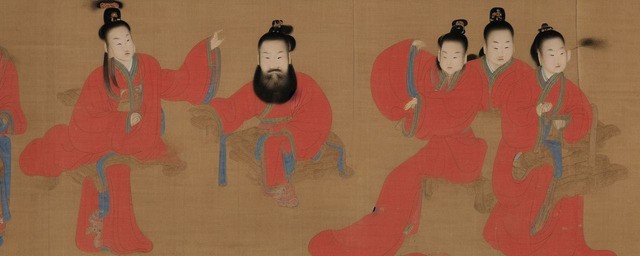
宋朝和明朝的英语区别大吗
原|2023-12-27 17:39:54|浏览:97
The Song Dynasty (960-1279) and the Ming Dynasty (1368-1644) were two significant periods in Chinese history. While there were some similarities between the Song and Ming dynasties, there were also several notable differences. In terms of their impact on Chinese culture, governance, economy, and foreign relations, the two dynasties had distinct characteristics.
One major difference between the Song and Ming dynasties can be seen in their governance structures. The Song Dynasty had a centralized bureaucratic system known as the civil service examination, which allowed individuals to become government officials based on their merit rather than their social status. This system helped to create a more inclusive and efficient government based on intellectual abilities. In contrast, the Ming Dynasty relied on a more hierarchical social structure, with the emperor at the top and a strict class system. The Ming government also implemented various policies to consolidate power and control over the population.
Another significant difference between the Song and Ming dynasties lies in their foreign relations and expansion. During the Song Dynasty, China faced external threats from nomadic tribes and the Mongol Empire. The Song Dynasty employed a policy of appeasement and paid tribute to the Mongols to maintain stability. In contrast, the Ming Dynasty adopted a more assertive approach towards foreign relations, particularly with the maritime expeditions led by Admiral Zheng He. These expeditions aimed to demonstrate Chinese power and influence and establish trade networks with other countries. The Ming Dynasty also constructed the Great Wall of China to defend against northern invaders.
The economic systems of the Song and Ming dynasties also differed significantly. The Song Dynasty experienced a prosperous period of economic development, known as the "Golden Age." It saw advancements in agriculture, industry, and trade, which led to the growth of cities and a rising middle class. The Song Dynasty also introduced paper money, revolutionizing the monetary system. In contrast, the Ming Dynasty embraced a more conservative economic policy. They focused on self-sufficiency and restricted foreign trade, leading to a decline in international influence and economic development.
In terms of culture, both the Song and Ming dynasties had significant artistic and intellectual achievements. The Song Dynasty is known for its accomplishments in landscape painting, poetry, and calligraphy, with artists like Fan Kuan and Su Shi emerging during this period. The Ming Dynasty also saw the flourishing of arts and literature, with famous works such as "Journey to the West" and "The Plum in the Golden Vase." However, there were stylistic differences between the two dynasties, with the Song Dynasty focusing on elegance and simplicity, while the Ming Dynasty emphasized grandeur and opulence.
In conclusion, the Song and Ming dynasties had notable differences in terms of governance, foreign relations, economy, and culture. While the Song Dynasty focused on meritocracy, the Ming Dynasty had a more hierarchical system. The Song Dynasty maintained stability through appeasement, while the Ming Dynasty pursued a more assertive foreign policy. Economically, the Song Dynasty experienced a period of growth, while the Ming Dynasty focused on self-sufficiency. Despite some similarities in cultural achievements, there were distinct stylistic differences between the two dynasties. Overall, the differences between the Song and Ming dynasties were substantial, demonstrating the ever-changing nature of Chinese history.
猜你喜欢
- 茶的分类及代表品种
- 六大茶类的代表名茶分别有
- 茶的类型和代表
- 六大茶叶的分类及产地
- 庙的分类及代表
- 藻的分类及其代表
- 茶的分类及代表茶品特点
- 茶的分类及代表茶
- 简述茶类的分类及其代表性名茶
- 六大茶类的分类及代表茶
- 动物分类及代表
- 糖的分类及代表
- 茶的分类及代表茶叶
- 茶的分类及代表图
- 茶的分类及代表作
- 茶器按质地的分类及代表茶器
- 茶的分类及代表名茶教学设计
- 简述茶的分类及代表性名茶
- 请写出乌龙茶的分类及代表茶
- 法国雅文邑白兰地系列
- 雅文邑白兰地介绍
- 1952年法国雅文邑白兰地
- 法国雅玛邑白兰地
- 纽波利顿獒
- 法国犬品种
- 南非獒犬的优缺点
- 波尔多獒犬寿命
- 波兰狩猎犬
- 波尔多犬和罗威纳犬对比
- 波尔多犬和杜高对比
- 世界十大凶犬
- 护卫犬排行榜前十名
- 大红袍怎么泡效果好
- 大红袍怎么泡不开
- 大红袍怎么泡茶
- 大红袍怎么泡出来没颜色
- 大红袍怎么泡不苦
- 大红袍怎么泡多久
- 大红袍怎么泡才正确的特点
- 大红袍怎么泡没有柴味儿
- 大红袍怎么泡放多少合适
- 花香大红袍怎么泡
- 大红袍怎么泡茶好
- 大红袍是怎么泡的
- 大红袍怎么泡水好喝
- 大红袍用玻璃杯怎么泡
- 大红袍怎么泡味道浓一些
- 十大排名果花茶
- 十大花茶组合排名
- 十大花茶品种大全
- 十大花茶功效
- 十大花茶销量排行榜
- 十大花茶有哪些
- 十大花茶品种
- 十大花茶推荐
- 十大花卉排行榜
- 十大花卉
- 十大花茶调理内分泌
- 九五至尊秦昊明月关山
- 红茶冲泡工艺
为你推荐






































































